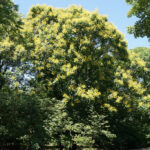Successfully guiding your azaleas through the challenges of winter is a crucial aspect of their year-round care, ensuring they not only survive but emerge in spring ready to produce a spectacular floral display. Winter presents a multi-faceted threat to these plants, from freezing temperatures and root damage to moisture loss and sunscald. The specific preparations needed will depend heavily on your climate’s severity and the particular type of azalea you are growing, whether it be an evergreen or a deciduous variety. A proactive approach in autumn, focused on proper hydration, insulation, and protection, is the key to safeguarding your investment and guaranteeing a healthy start to the next growing season.
The primary challenge for azaleas in winter, particularly for evergreen varieties, is desiccation. This is the process of drying out, which occurs when cold, dry winds pull moisture from the leaves while the ground is frozen, preventing the roots from absorbing any water to replenish it. This results in the characteristic brown, dry, and “burned” appearance of the foliage that is often mistaken for simple cold damage. Therefore, a significant portion of winter care is focused on moisture management, ensuring the plant enters dormancy well-hydrated and that measures are in place to reduce water loss from the leaves throughout the coldest months.
Root protection is another fundamental component of winter care. Azaleas have a shallow, fibrous root system that is more vulnerable to freezing temperatures than the roots of more deeply rooted plants. Extreme cold can damage or kill these fine roots, severely impacting the plant’s health and its ability to take up water and nutrients in the spring. The repeated freezing and thawing of soil can also cause “heaving,” a phenomenon where the plant is literally pushed up out of the ground, exposing its delicate roots to the harsh, drying air.
Finally, the physical weight of snow and ice can pose a significant threat, especially to multi-stemmed or spreading evergreen azaleas. A heavy, wet snowfall can accumulate on the foliage, splaying the branches outward and sometimes causing them to split or break under the load. Similarly, the formation of ice during freezing rain events can encase the branches, making them brittle and highly susceptible to damage. Taking steps to mitigate these physical risks is an important part of a comprehensive winterizing strategy.
Autumn preparation
The groundwork for successful winter survival begins well before the first frost arrives. One of the most critical autumn tasks is to ensure your azaleas are thoroughly and deeply watered throughout the fall, right up until the ground freezes solid. This is especially important if autumn has been dry. A plant that enters winter in a state of drought stress is far more likely to suffer from winter desiccation. Provide a deep, slow soaking once a week if there has not been at least an inch of rainfall, allowing the soil around the root zone to become well-hydrated.
More articles on this topic
As the weather cools in late summer and early autumn, it is imperative that you cease all fertilization. Applying fertilizer, particularly those high in nitrogen, late in the season encourages a flush of new, tender growth. This new foliage will not have adequate time to harden off and mature before the onset of freezing temperatures, making it extremely vulnerable to cold damage. The plant’s energy during autumn should be directed towards preparing for dormancy and hardening its existing tissues, not producing new, susceptible growth.
It is also important to perform a final cleanup around the base of your azaleas in the fall. Rake up and dispose of any fallen leaves from the plant and the surrounding area. This simple act of sanitation helps to remove the overwintering spores of various fungal diseases, such as leaf spot and petal blight, reducing the likelihood of an infection the following spring. However, do not perform any significant pruning on your azaleas in the autumn. The flower buds for next spring have already formed, and any trimming at this time will sacrifice your future blooms.
Applying a fresh layer of mulch after the first light frost but before the ground freezes hard is a vital step in autumn preparation. A two- to three-inch layer of an organic mulch like pine straw, shredded bark, or oak leaves provides essential insulation for the shallow root system. This mulch helps to moderate soil temperature fluctuations, protecting the roots from the extremes of the freeze-thaw cycle. Be sure to keep the mulch pulled back a couple of inches from the main stem of the plant to prevent rot and to discourage rodents from nesting against the trunk.
Protection against cold and wind
In regions where winter temperatures regularly drop well below freezing, providing additional protection against cold and wind can be the difference between a thriving azalea and a severely damaged one. This is especially true for evergreen varieties, which are susceptible to winter burn, and for any newly planted azaleas that have not had a full season to establish a robust root system. The goal of this protection is to create a microclimate that shields the plant from the harshest elements.
More articles on this topic
One of the most effective methods of protection is to create a windbreak. This can be achieved by driving stakes into the ground around the plant (before the ground freezes) and wrapping them with burlap or a specially designed shrub wrap. It is important that the wrapping material does not come into direct contact with the foliage, as this can trap moisture and cause its own set of problems. The purpose of the screen is to deflect the wind, not to create a completely sealed, airtight enclosure. Leaving the top open allows for some air circulation and prevents heat buildup on sunny winter days.
For smaller or more tender azaleas, a protective structure can be built. A simple A-frame constructed from wooden laths and placed over the plant can help to shed the weight of heavy snow and ice, preventing branch breakage. This frame can also be covered with burlap for added wind protection. Another option is to use anti-desiccant sprays, which are products that can be applied to the foliage of evergreen azaleas in late autumn. These sprays create a thin, waxy coating on the leaves that helps to reduce moisture loss from transpiration during the winter months. Be sure to follow the product’s application instructions carefully.
It is also important to consider the location of your azaleas in relation to potential winter hazards. Avoid planting them in exposed, windy corridors or on the south or southwest side of a building where they are subjected to the dual stress of direct winter sun and reflected heat. This can cause the plant to warm up during the day and then freeze rapidly at night, leading to cell damage and bark splitting. A location with protection from the prevailing winter winds and shelter from the intense afternoon sun is always preferable.
Managing snow and ice
While a gentle blanket of snow can act as a natural insulator for the base of the plant and its roots, heavy, wet snow or ice can be quite destructive. The weight can put immense pressure on the branches of evergreen azaleas, causing them to bend, splay, or even snap. After a heavy snowfall, it is wise to gently remove the snow accumulation from the branches. Do not shake the branches, as this can cause them to break, especially when they are cold and brittle. Instead, use a soft broom or your gloved hand to gently brush the snow off in an upward motion.
The situation is different when the branches are encased in ice from freezing rain. Ice-coated branches are extremely brittle, and any attempt to remove the ice is almost certain to cause more harm than good. In this scenario, the best course of action is to do nothing and allow the ice to melt naturally as temperatures rise. Do not try to knock the ice off or use any de-icing products, as this will lead to significant damage. Providing structural support beforehand with frames or by loosely tying branches together can help, but once the ice has formed, patience is the only solution.
The placement of your azaleas should also take into account potential sources of heavy snow and ice from above. Avoid planting them directly under the eaves of your roof where large amounts of snow or ice can slide off and crush the plant below. Similarly, be mindful of their proximity to driveways and walkways where snow from plows or shovels might be piled up. The force of compacted, heavy snow being thrown onto the plant can cause severe mechanical damage to the branches.
Another winter hazard related to ice is the use of de-icing salts on nearby walkways and driveways. The salt spray from passing traffic or the runoff from melting ice can contaminate the soil where your azaleas are planted. Azaleas are highly sensitive to salt, which can damage their roots and foliage. If your plants are located near a salted area, consider creating a burlap barrier to shield them from salt spray. In the spring, it may be beneficial to flush the soil in that area with plenty of fresh water to help leach some of the accumulated salts out of the root zone.
Care for container-grown azaleas
Azaleas grown in containers require a different and more intensive approach to winter care because their root systems are far more exposed to the cold. The soil in a pot will freeze much faster and more completely than the ground, offering very little insulation to the roots. In most climates where the ground freezes, leaving an azalea in a standard pot above ground for the winter is a death sentence for the plant. The roots simply cannot survive being frozen solid.
The most reliable method for wintering a potted azalea is to move it into a protected, unheated space where the temperature will remain consistently cool but above freezing. An attached garage, a shed, or an unheated basement are all excellent options. The goal is not to have the plant grow, but to keep it dormant and safe from extreme cold. The plant will still need a small amount of water periodically throughout the winter, perhaps once every three to four weeks, just enough to keep the soil from becoming completely bone dry.
If you do not have a suitable indoor space, you can try to insulate the pot. One method is to group all your container plants together in a sheltered location and surround the cluster of pots with a thick layer of shredded leaves or straw contained within a chicken wire cage. Another, more effective technique is the “pot-in-pot” method, where a permanent hole is dug in the garden to sink the plant, pot and all, into the ground for the winter. The surrounding soil provides excellent insulation for the roots. Once the pot is in the ground, mulch the top as you would for an in-ground plant.
Regardless of the method you choose, it is crucial that the container provides excellent drainage. A pot that becomes waterlogged and then freezes can cause the roots to be encased in a block of ice, which is fatal. Furthermore, the expansion of the freezing water can easily crack and destroy terracotta or ceramic pots. Therefore, ensure the drainage holes are clear before winter sets in. Proper winter care for containerized azaleas takes effort, but it is essential for their survival in colder climates.


















